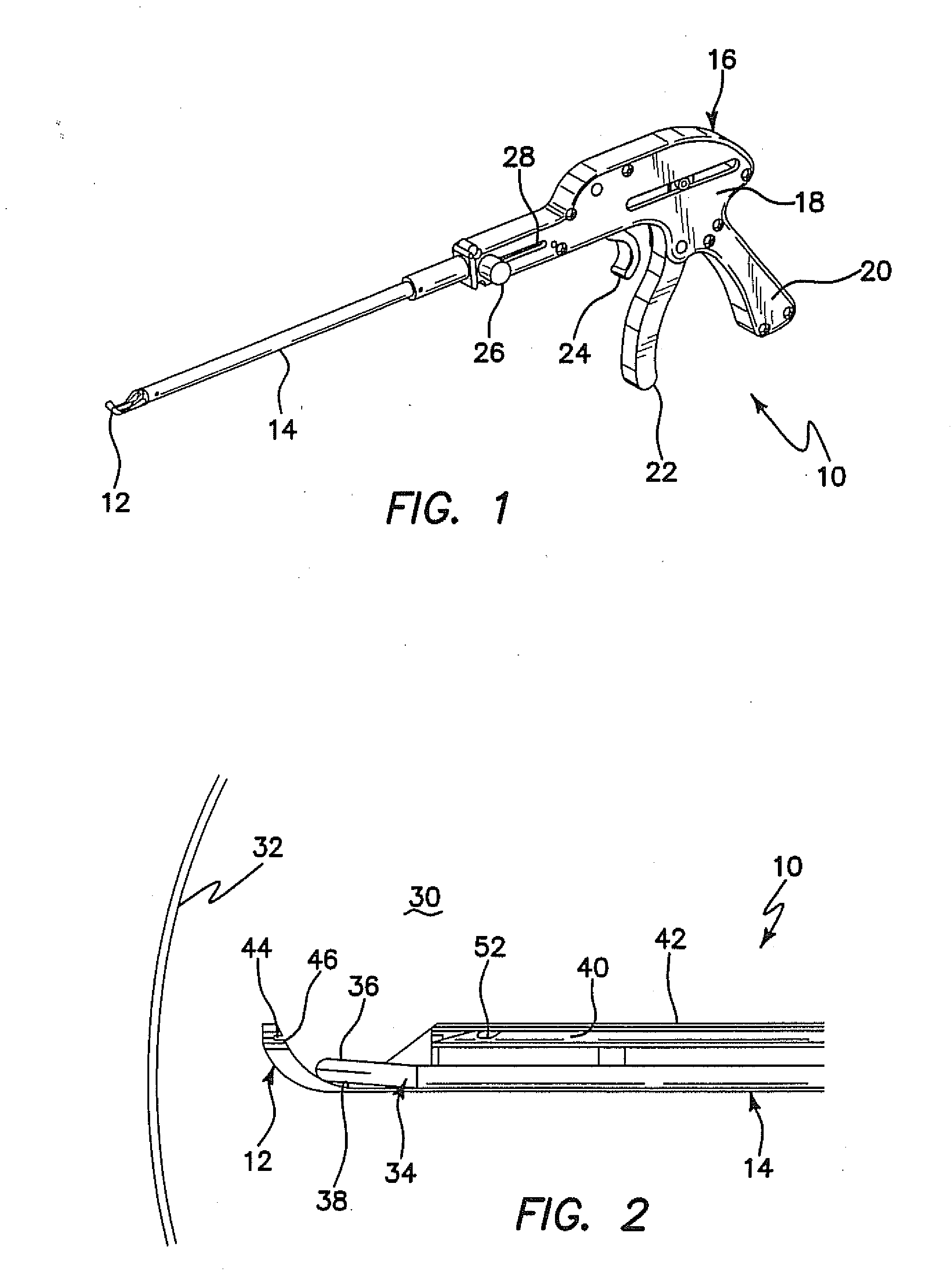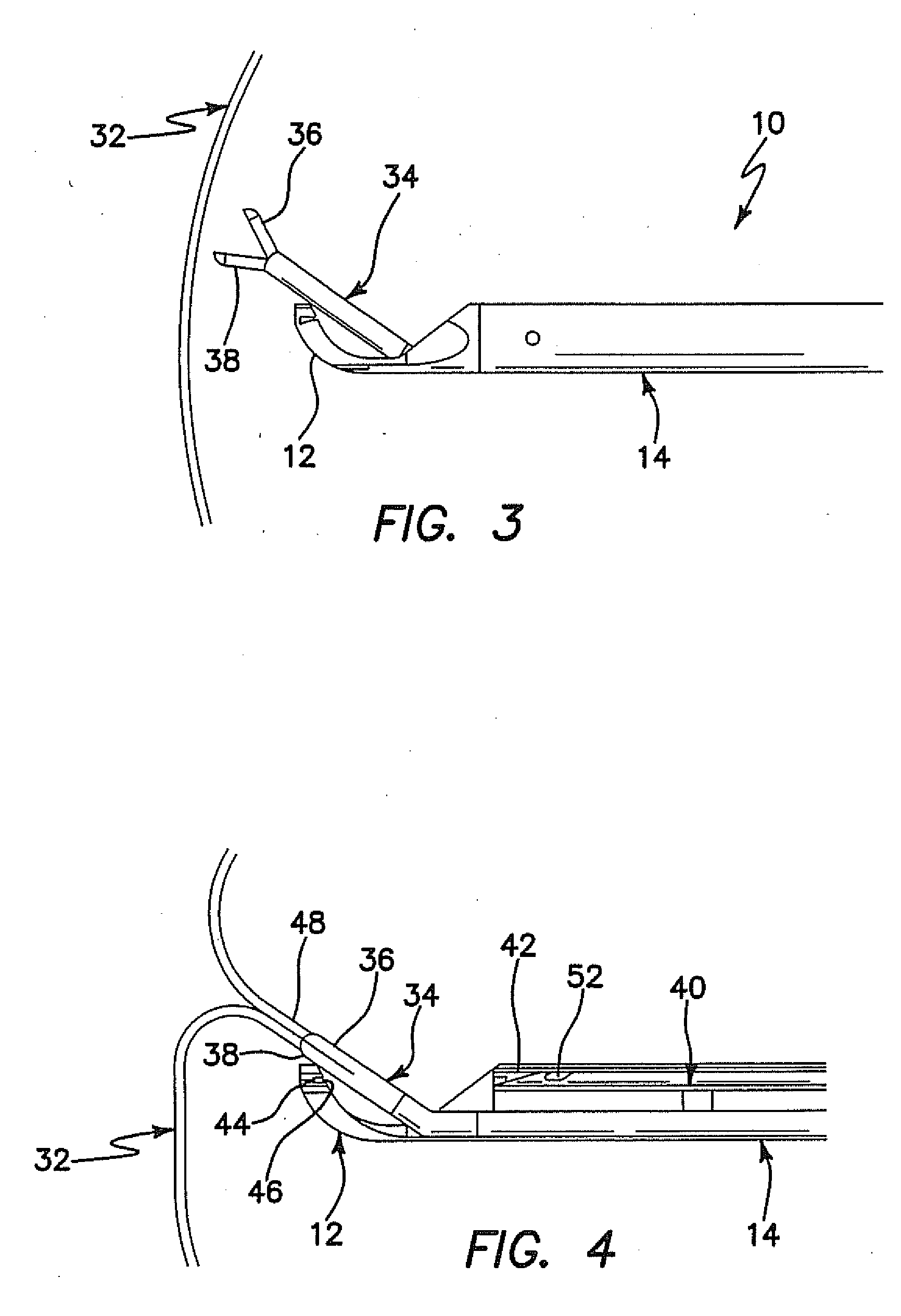Arthroscopic soft tissue plication systems and methods
- Summary
- Abstract
- Description
- Claims
- Application Information
AI Technical Summary
Benefits of technology
Problems solved by technology
Method used
Image
Examples
Embodiment Construction
[0058] Referring now more particularly to the drawings, there is shown in FIG. 1 a plication instrument 10. The instrument 10 comprises a distally disposed suture cartridge 12 and an instrument shaft 14 extending proximally from the suture cartridge 12. A handle portion 16 comprises a handle housing 18, which is integrated into the shaft 14, as well as a grip 20, a needle advancement lever 22, and a grasper actuation trigger 24. A shaft advancement knob 26 is slidable axially within a slot 28.
[0059] The attachment of the suture cartridge 12 to the instrument shaft 14 allows the surgeon to unload and re-load suture cartridges after every plication stitch.
[0060] Now with reference to FIG. 2, a distal end of the instrument 10 is illustrated. In this figure, the instrument 10 has been introduced into an operative site 30, which is preferably a human shoulder. Within the shoulder 30, the instrument 10 is illustrated as it approaches the shoulder capsule 32. A flexible cable grasper 34 ...
PUM
 Login to View More
Login to View More Abstract
Description
Claims
Application Information
 Login to View More
Login to View More - R&D
- Intellectual Property
- Life Sciences
- Materials
- Tech Scout
- Unparalleled Data Quality
- Higher Quality Content
- 60% Fewer Hallucinations
Browse by: Latest US Patents, China's latest patents, Technical Efficacy Thesaurus, Application Domain, Technology Topic, Popular Technical Reports.
© 2025 PatSnap. All rights reserved.Legal|Privacy policy|Modern Slavery Act Transparency Statement|Sitemap|About US| Contact US: help@patsnap.com



